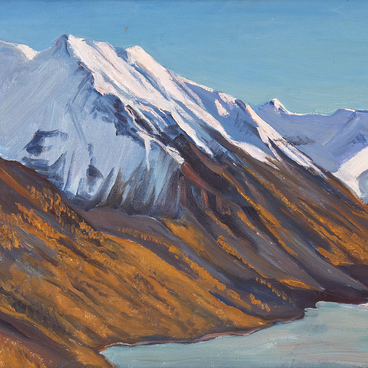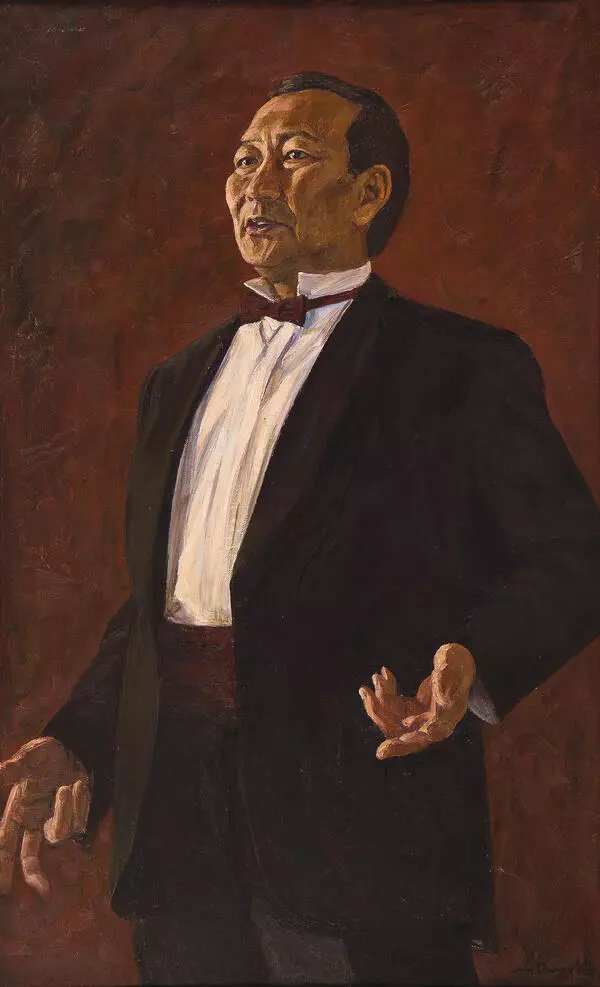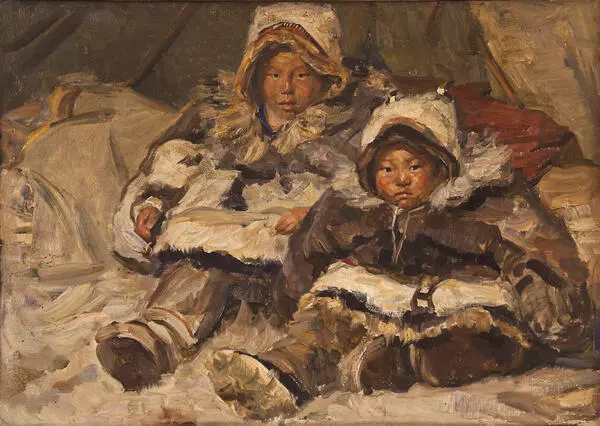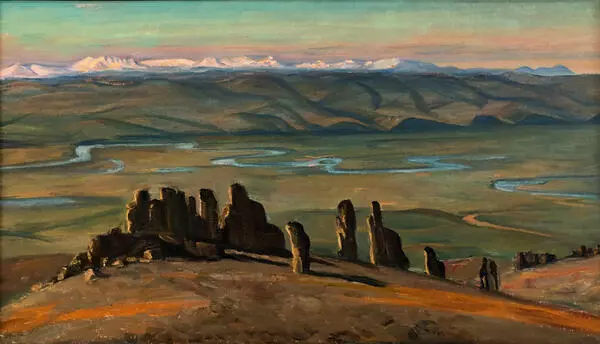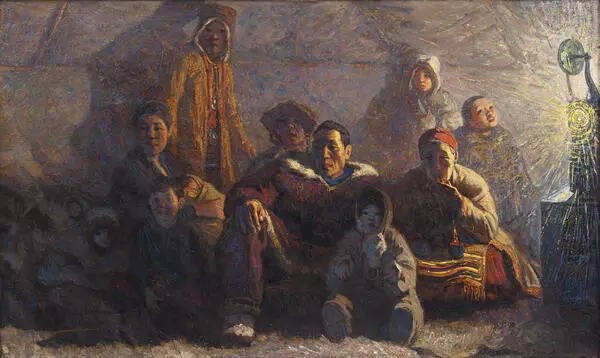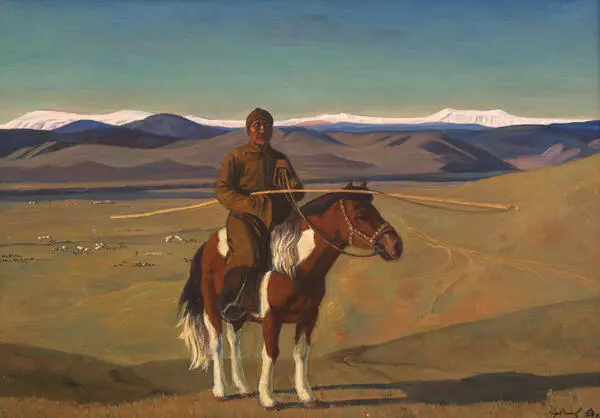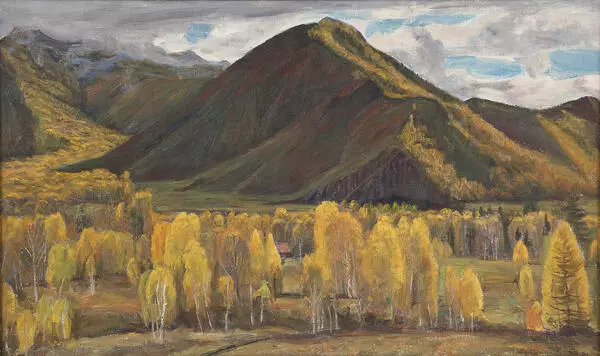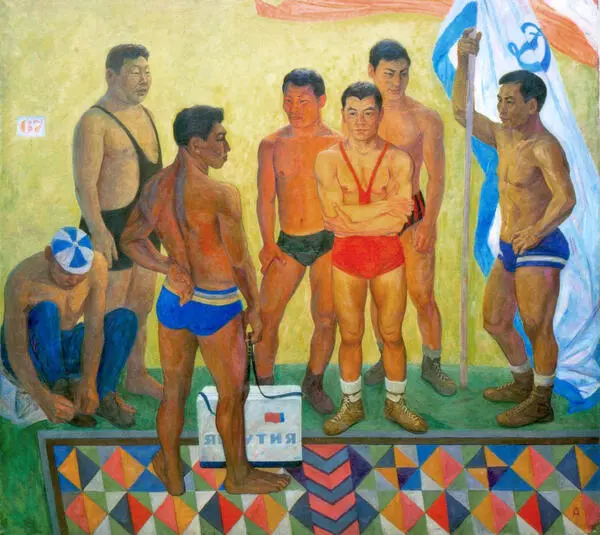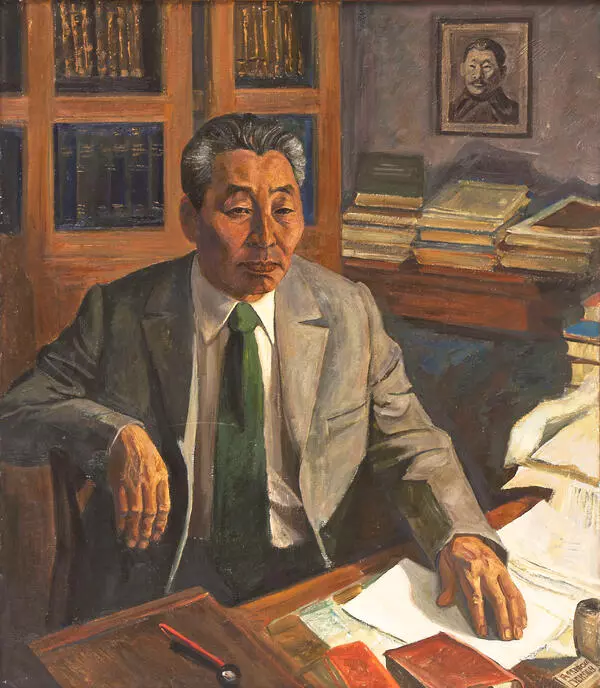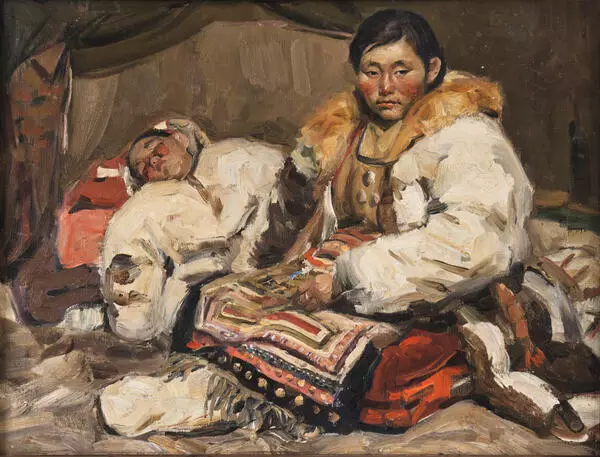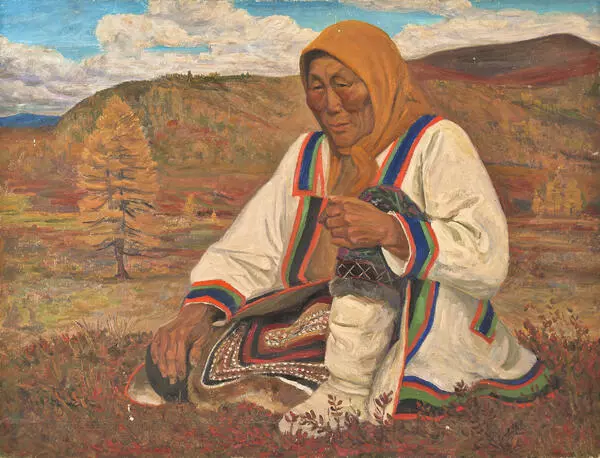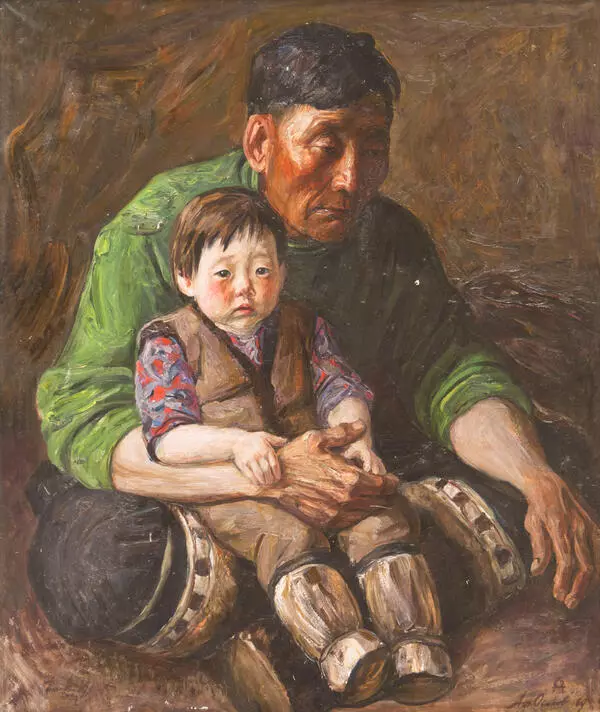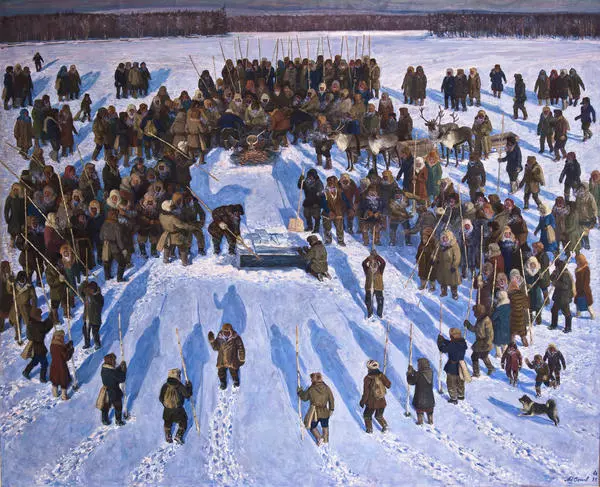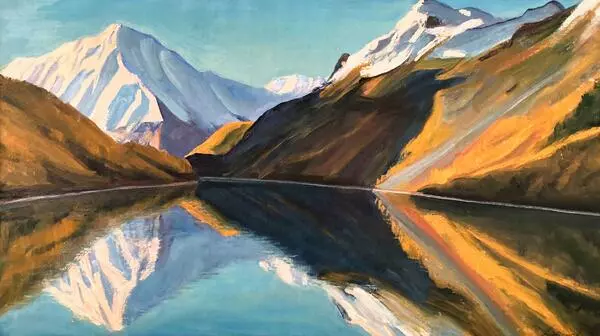Yakut painter Afanasy Osipov was born on February 28, 1928. In his youth, he went to Moscow to study at the Moscow Secondary Art school at the V.I. Surikov Institute, and then entered the institute. Osipov participated in all-union and foreign art exhibitions, became a People’s Artist of the USSR, an academician of the Russian Academy of Arts, and was awarded the I. Repin State Prize of the RSFSR.
The National Art Museum of the Republic of Sakha (Yakutia) presents Afanasy Osipov’s triptych ‘Arkhangai Arats’. A triptych is a work consisting of three parts united by a common idea. Afanasy Osipov dedicated it to the Arkhangai Arats. This is the name of the nomadic people who live in the area of Arkhangai on the territory of modern Mongolia. Their main occupation of Arats is cattle breeding.
In the right part of the triptych ‘Drovers’, there are shepherds who look after the drove. The words ‘drove’ means a herd of cattle in Asia. The drove differs from an ordinary herd in that the animals are selected according to the same data, such as age, weight, and degree of fatness. The heroes of the canvas are shown resting at a halt. They sit on the ground in the ‘lotus’ position with their legs crossed traditional for Eastern peoples. The drovers are dressed in traditional long wrap robes belted with sashes. Only a modern shirt cut clothes with turn-down collars and a hat with a short brim on the head of one of the Arats fashionable in the 1980s evidence about the time of creation of the picture, i.e. 1987.
There is a camel next to them. For Afanasy Osipov, this animal was unusual. He saw it for the first time when he went on foreign trips to Asian countries. The painting depicts a Bactrian. It is a two-humped camel that lives in the Gobi Desert. In Mongolia, it is used as a pet and is also kept in zoos. Osipov carefully wrote out the appearance of a camel, namely: a proud posture, long strong legs, and a hump-nosed muzzle. The folds of fabric on the pack luggage closely echo the outlines of the mountains in the background. The color scheme of the painting conveys the beauty of Mongolian nature in the dry period.
The National Art Museum of the Republic of Sakha (Yakutia) presents Afanasy Osipov’s triptych ‘Arkhangai Arats’. A triptych is a work consisting of three parts united by a common idea. Afanasy Osipov dedicated it to the Arkhangai Arats. This is the name of the nomadic people who live in the area of Arkhangai on the territory of modern Mongolia. Their main occupation of Arats is cattle breeding.
In the right part of the triptych ‘Drovers’, there are shepherds who look after the drove. The words ‘drove’ means a herd of cattle in Asia. The drove differs from an ordinary herd in that the animals are selected according to the same data, such as age, weight, and degree of fatness. The heroes of the canvas are shown resting at a halt. They sit on the ground in the ‘lotus’ position with their legs crossed traditional for Eastern peoples. The drovers are dressed in traditional long wrap robes belted with sashes. Only a modern shirt cut clothes with turn-down collars and a hat with a short brim on the head of one of the Arats fashionable in the 1980s evidence about the time of creation of the picture, i.e. 1987.
There is a camel next to them. For Afanasy Osipov, this animal was unusual. He saw it for the first time when he went on foreign trips to Asian countries. The painting depicts a Bactrian. It is a two-humped camel that lives in the Gobi Desert. In Mongolia, it is used as a pet and is also kept in zoos. Osipov carefully wrote out the appearance of a camel, namely: a proud posture, long strong legs, and a hump-nosed muzzle. The folds of fabric on the pack luggage closely echo the outlines of the mountains in the background. The color scheme of the painting conveys the beauty of Mongolian nature in the dry period.



